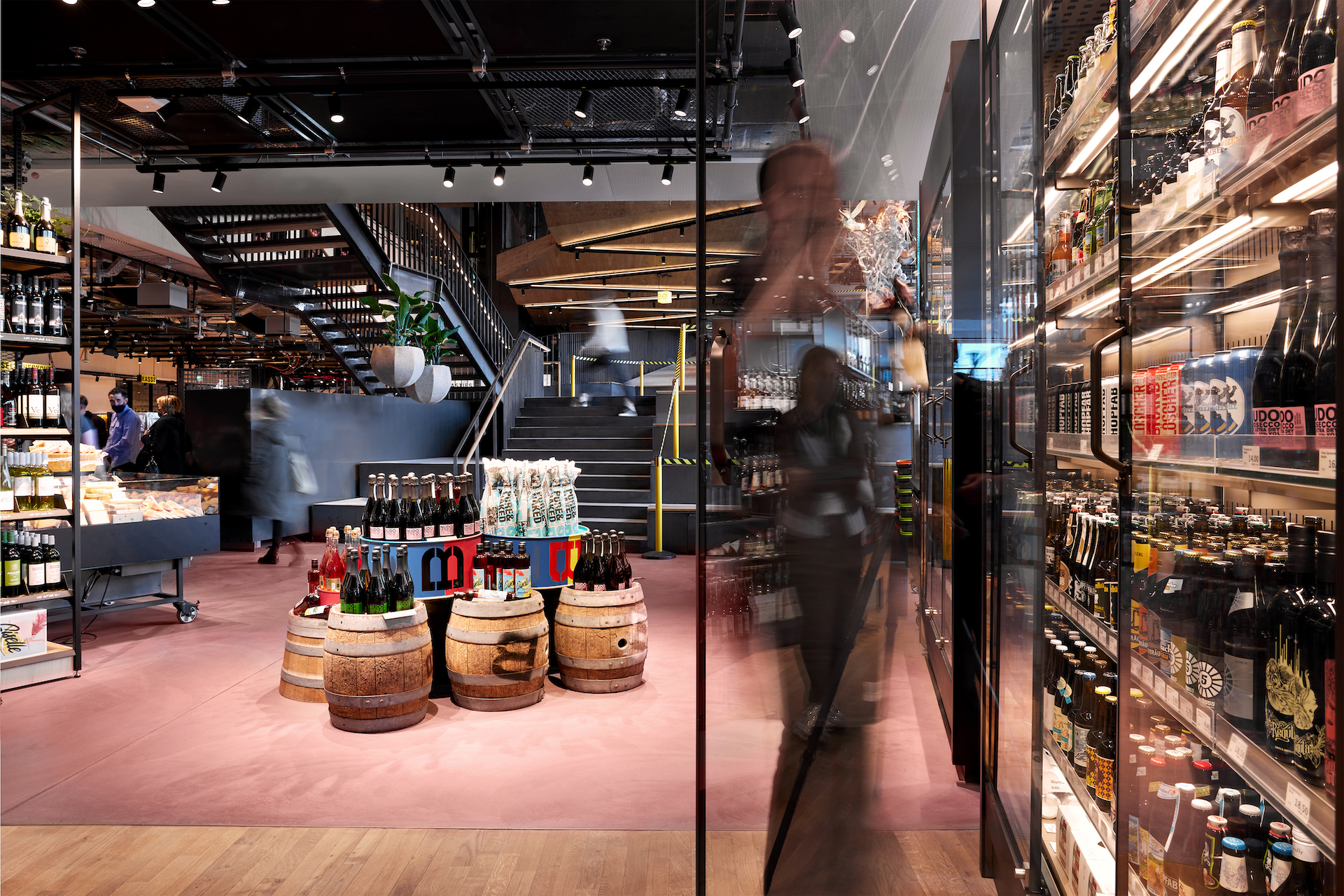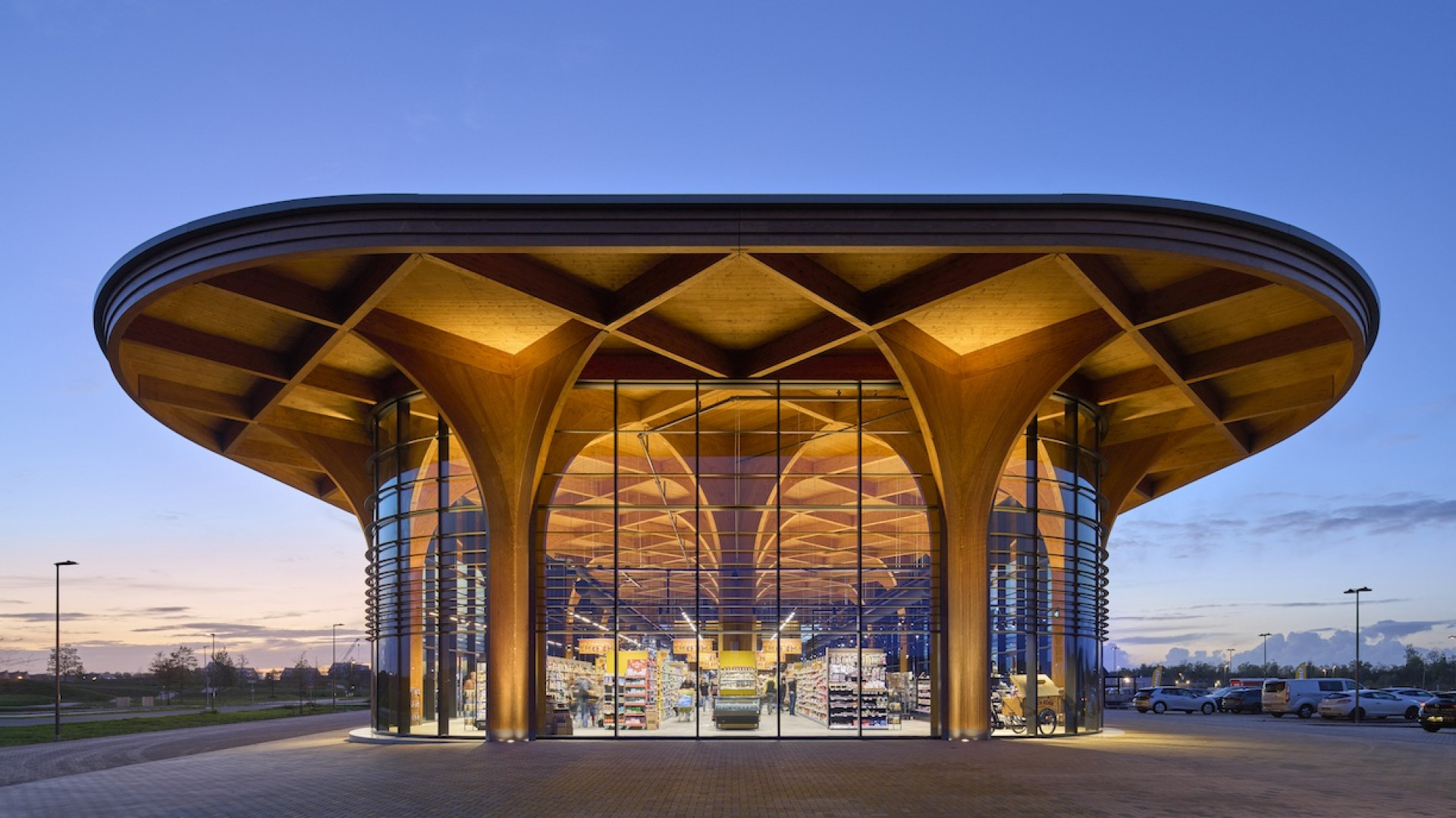From modular concepts to automated solutions, supermarkets and food retailers of all sizes are exploring agile, adaptable formats to optimize and future-proof the shopping experience.
The pandemic prompted major shifts across retail, serving as a crash course in designing for uncertain times. Perhaps one of the most notable changes has been the creation of flexible shop floors that can be rearranged or reinvented with relative ease and speed.
While we’ve seen a move towards multifunctionality across a range of store concepts, supermarkets and food retailers are now trialling changeable spaces, too. This is in part because of the staggering growth of digital grocery – a market expected to reach a value of €223 billion by 2025 in the US alone, according to Insider Intelligence. As grocers grapple with the changing landscapes of commerce and consumer behaviour, remaining agile is allowing them to respond with new offerings and points of difference.
From our partners:
Stores designed to flex
With its Flexstore model, Zurich-based design and shopfitting company Interstore | Schweitzer is leading the way for modular stores that serve as a prototype for future supermarkets. The design involves an elaborate system in which the building services – including water and electricity – are fed from the ceiling into the fixtures, meaning that everything from fresh food counters to refrigerator units are moveable. This enables retailers to create or change new departments quickly and easily without major construction costs.

 PHOTOS: LOVE WEBER
PHOTOS: LOVE WEBER
Cover and above: Interstore | Schweitzer’s Flexstore model is incorporated at Bridge, a Migros location in Zurich.
The technical elements of a Flexstore have previously been tested across a few sites, but the full concept has been rolled out in Canada at a Sobey’s supermarket in Orangeville, Ontario. Pushing the idea further, Schweitzer has continued developing the format in Zurich for Swiss retailer Migros. The result – called Bridge – is based on the principles of a Flexstore, and also connects a fresh food market with local catering and store events.
Most importantly, all furnishing elements are totally flexible and can be moved to support the evolution and adaptability of the space. Beyond practical benefits and efficiency, this approach provides an opportunity for retailers to challenge a lack of distinction when it comes to their design and customer experience.
The supermarket as a third space
Grocery stores are no longer just places to shop for essentials. As their role and function evolves, so too must their design. To create dynamic, functionally impermanent spaces, retailers are starting to reframe the supermarket as a third space or community hub.
In the Netherlands, SuperHub has been conceived as an interactive, central building for the neighbourhood – one that addresses the need for adaptable space. Built with the community in mind, architectural design firm De Zwarte Hond and property developer MWPO have modernized the traditional supermarket format. The store – complete with a café – can continuously be rearranged to fit changing functions, like hosting events.
 PHOTO: RONALD TILLEMAN
PHOTO: RONALD TILLEMAN
Proposing a circular vision of traditional market-hall design, SuperHub in Groningen, the Netherlands, is conceived as an interactive social space.
In addition to selling food and provisions, the open and spacious building doubles as a meeting place for residents. The designers aimed to revive the personal and social aspects of the shopping experience – and to give locals a ‘refreshing alternative’ to the current plethora of express delivery services.
High-tech theatres of food
While some businesses are emphasizing the supermarket as a space in which to gather and socialize, others are firmly leaning into the e-commerce effect. Given the rise of grocery delivery, the visible integration of technology is becoming a key feature in dynamic physical retail environments where food is sold – with profound impacts on service design.
In France, Mon Marché has unveiled a delivery-first concept described as both a ‘machine for living’ and ‘an efficient, animated theatre of food’. Unlike many ghost supermarket sites, this one – designed by Landini – puts two floors proudly on display to the streets of Paris, revealing the inner workings of the space to pedestrians outside.
 JD.com’s Ochama branch in the Dutch city of Leiden is an agile space designed by Storeage and Claessens Erdmann.
JD.com’s Ochama branch in the Dutch city of Leiden is an agile space designed by Storeage and Claessens Erdmann.
Similarly, retail giant JD.com has launched several robotics shops in the Netherlands under the brand name Ochama, marking the first time the company has opened a physical retail outfit in Europe. As part of this futuristic click-and-collect service, customers can see the automated warehouse and the fleet of robotics that quickly pick, sort and fulfil their orders.
In both instances, tapping the technologies typically involved in logistics and supply chain management, and bringing them in-store, are paramount to the success of this formula. Making the supermarket an omnichannel experience in this way showcases the potential for fast fulfilment to become a prominent design theme, as well as an attraction for shoppers.
By Alexander Hawkins
Source Frame
For enquiries, product placements, sponsorships, and collaborations, connect with us at hello@zedista.com. We'd love to hear from you!
Our humans need coffee too! Your support is highly appreciated, thank you!

